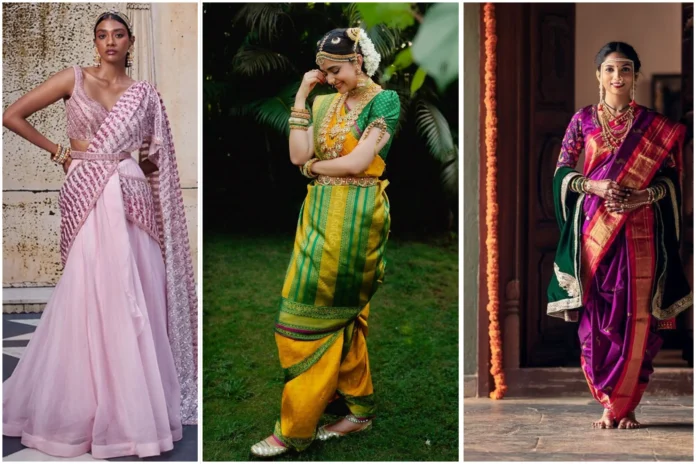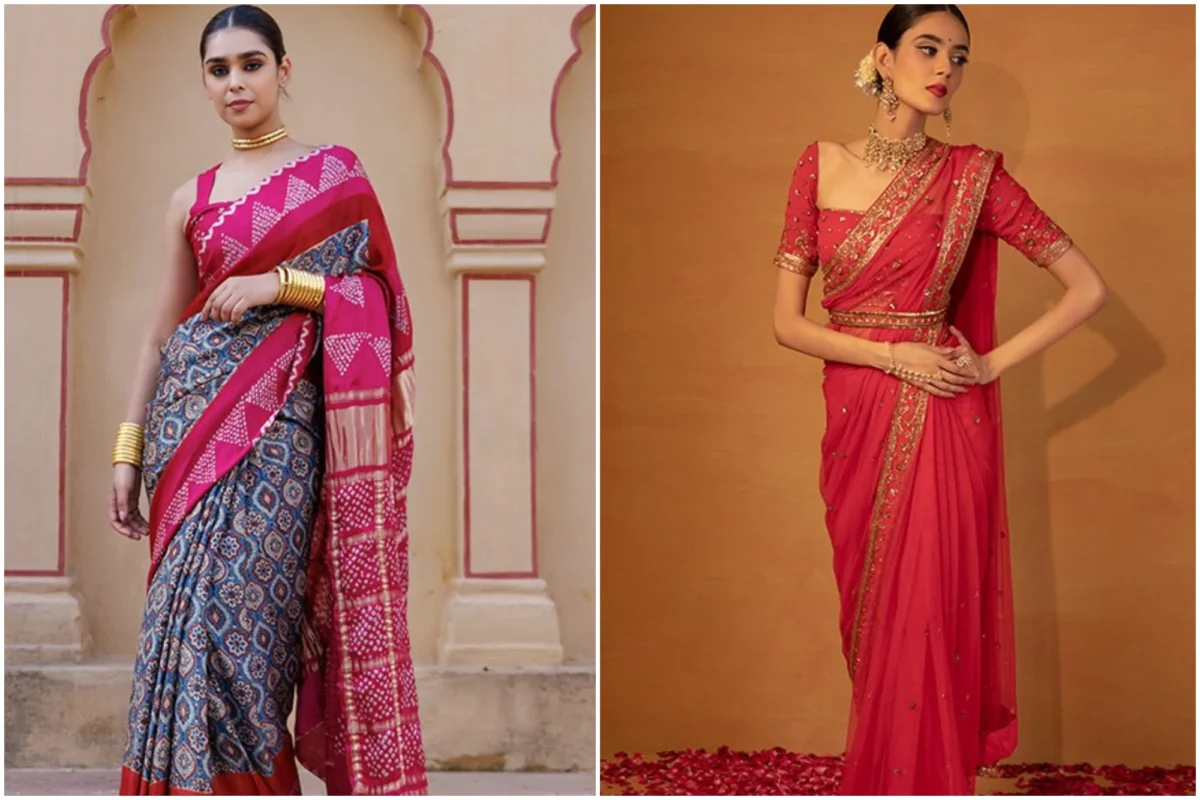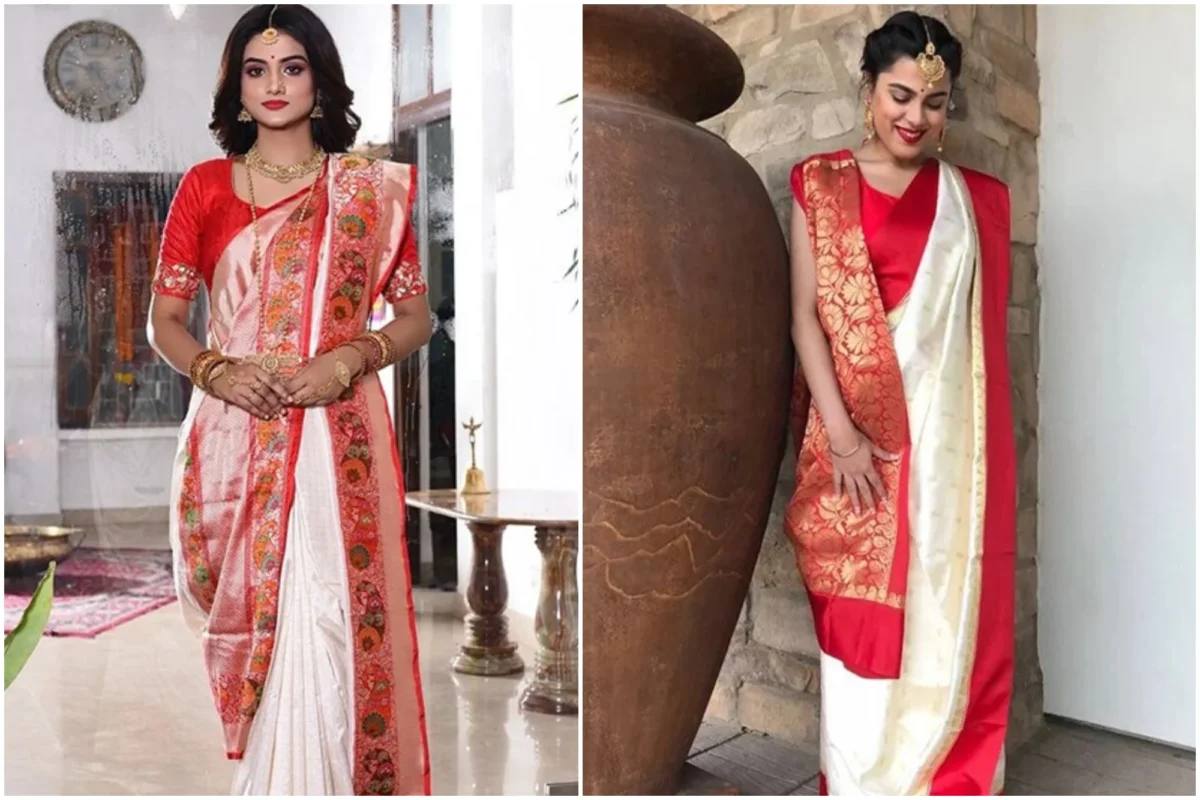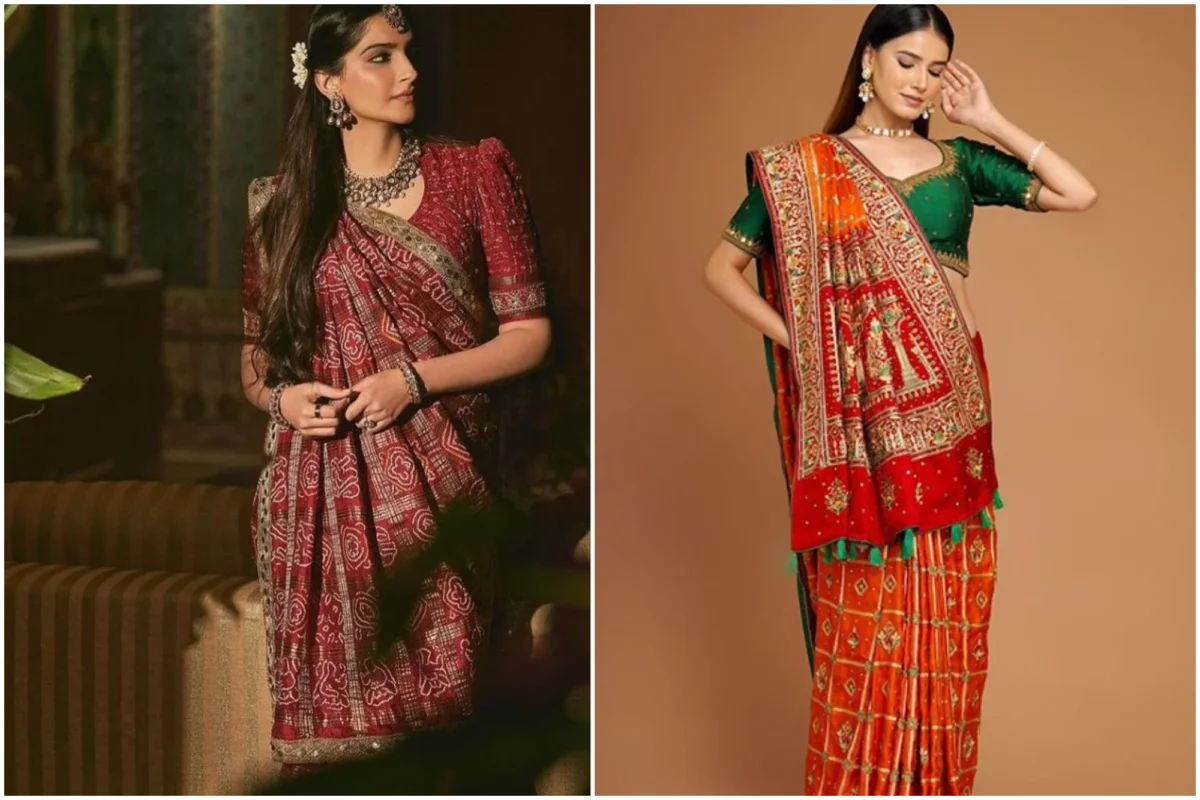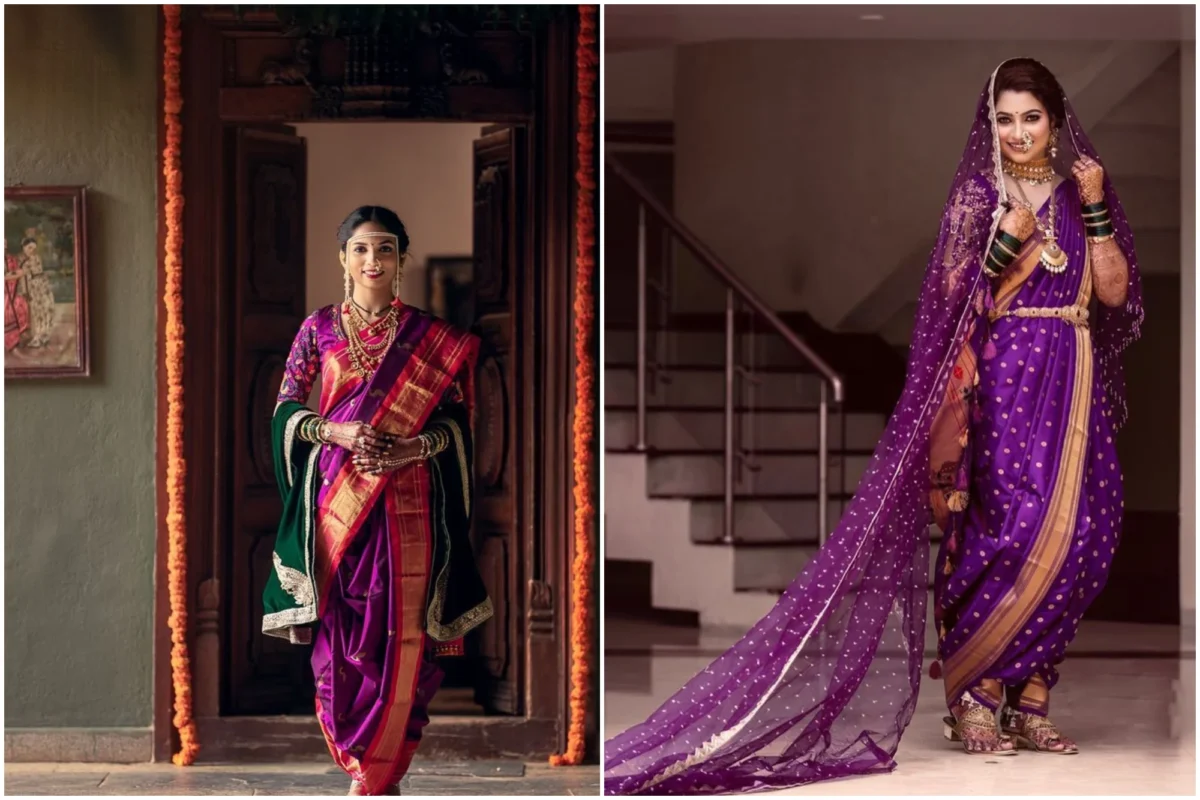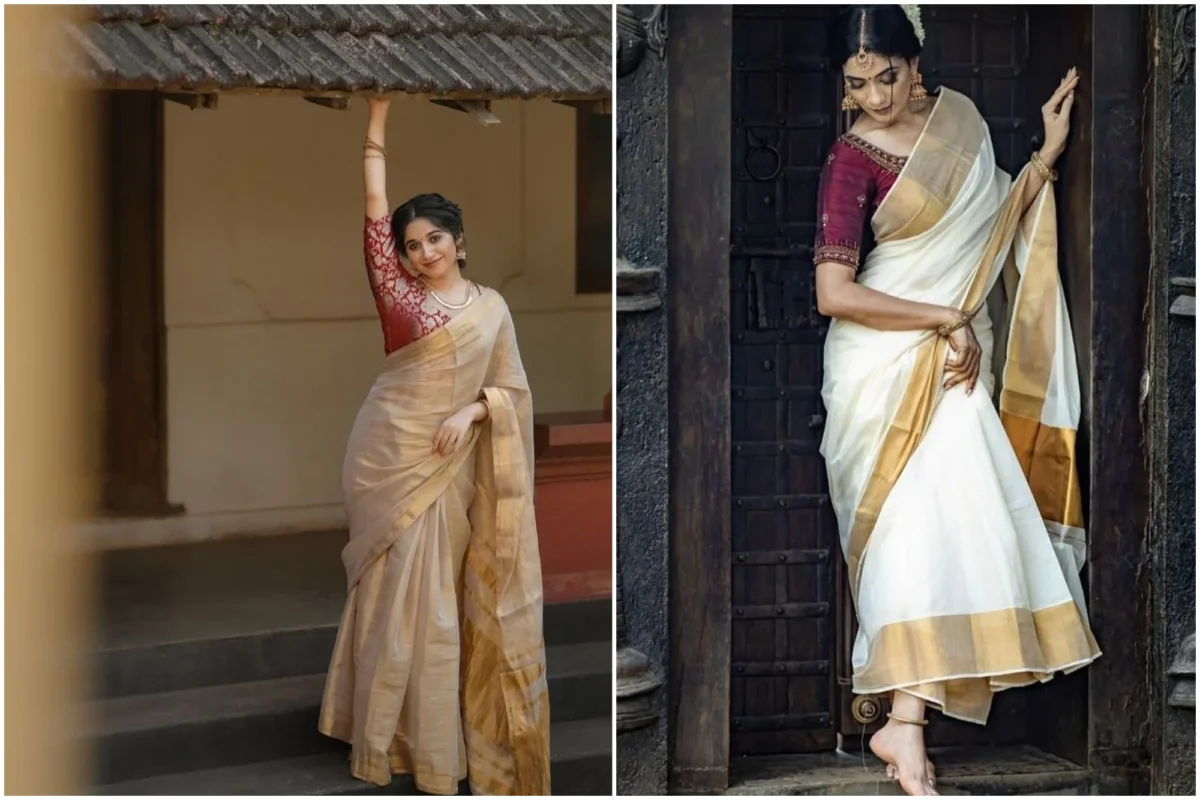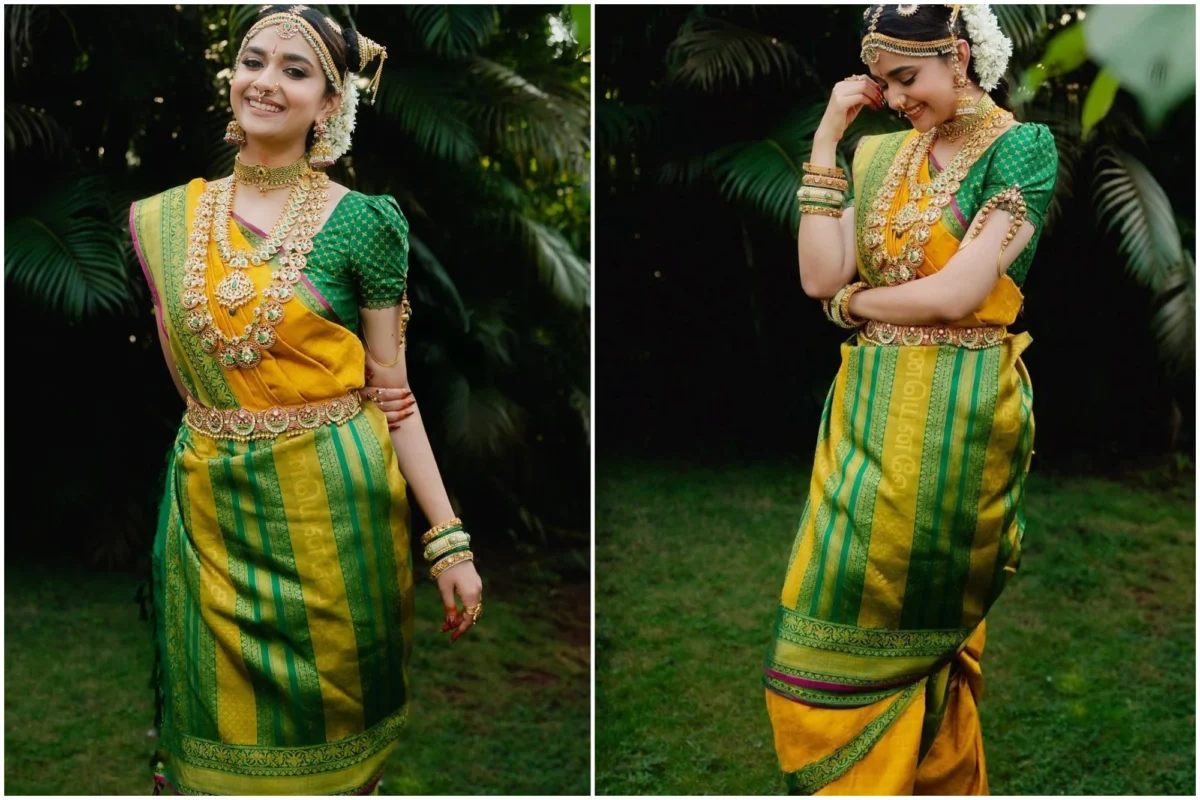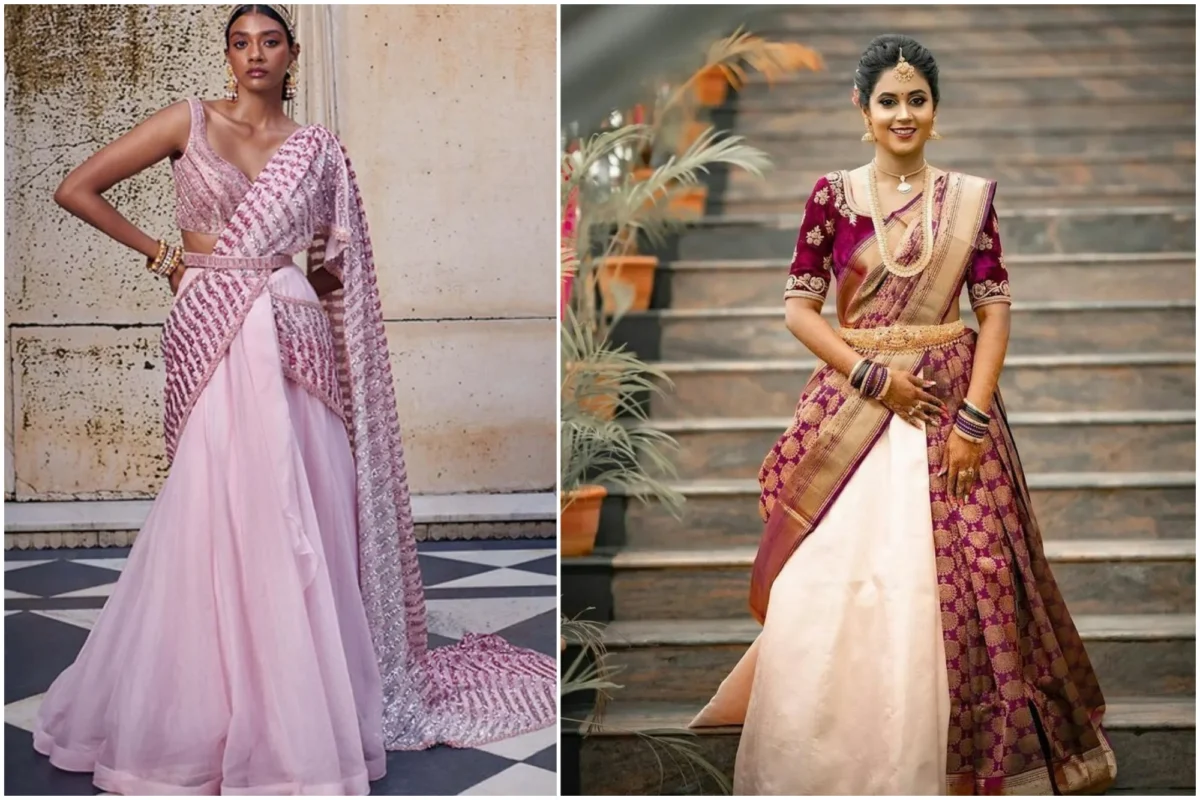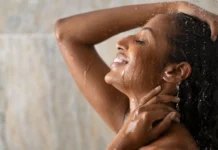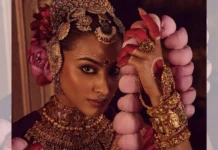Opting for a saree for your big day? These saree draping styles will surely come in handy for you!
There’s something inescapably poetic about a bride in a saree. Six yards of silk, chiffon, or georgette, draped around her body, becomes not just an article of clothing; it becomes a tale. A saree can whisper the stories of many generations, hold on to traditions, and yet dance to the beat of contemporary romance.
For brides, sarees are more than just attire for the wedding day; they are heirlooms in motion. And the way a saree is draped changes everything. It can make the bride look regal, contemporary, playful, or ethereal, depending on the style.
Today, we’ll wander through the enchanting world of different saree draping styles for brides in this blog created by our team at Wedding Affair, exploring how each one carries its own personality, tradition, and magic.
The Nivi Saree Draping Style – Ageless Beauty from Andhra Pradesh
The Nivi is possibly the most widely used saree drape in India, and for all the best reasons. From Andhra Pradesh, it’s the one style most individuals envision when they hear the word saree.
How to do it:
The saree is folded into the waistband, pleated at the front, and draped over the left shoulder with the pallu draping elegantly at the back.
Why it’s perfect for brides:
It flatters almost every body type.
Perfect for showcasing ornate borders and intricate pallus.
Easy to move in, which is essential for brides who want comfort without compromising grace.
Tip: Pair the Nivi drape with a heavily embroidered silk saree and a Kamarbandh (waist belt) to look like you’ve stepped out of a royal portrait.
Read Also: Celebration Look Ideas for Janmashtami
Bengali Saree Draping Style – A Touch of Grace and Grandeur
If Nivi is subtlety of elegance, the Bengali drape is unabashed opulence. While often seen at Durga Puja in red-and-white sarees, it can be an unforgettable wedding option in heavy silks and gold for a bride.
How it’s done:
The saree is draped without pleats in front, the pallu brought from behind over the right shoulder and then draped once more over the left shoulder. In some cases, a set of keys or jewellery is stuffed into the pallu for symbolic tradition.
Why it’s ideal for brides:
Double-draped pallus have a luxurious and layered appearance.
It is a queenly presence and ideal for vintage photography.
Tip: Wear it with a big red bindi, alta (traditional red dye) on your hands and feet, and gold temple jewellery, and you’ll embody the poetry of Rabindranath Tagore’s heroines.
Gujarati (Seedha Pallu) Saree Draping Style – The Showstopper
The Gujarati saree draping style is known for its front-facing pallu, making it the ideal choice for showcasing elaborate embroidery.
How it’s done:
Just like the Nivi style, but rather than the pallu draping at the back, it’s drawn to the front over the right shoulder and draped over the chest, with the edge tucked in at the back.
Why it’s ideal for brides:
Presents the heaviness of the pallu to be seen in all its splendour.
Works beautifully with Panetar or Bandhani sarees, usually used in Gujarati weddings.
Tip: Opt for a saree that has mirror work or luxurious Zardozi, so each glimmer of light is like a star blessing.
Read Also: Matching Bridal Hair Jewellery with Hairstyle
Maharashtrian Nauvari – Warrior Princess Vibes
The Nauvari saree (nine yards) is not just a garment; it’s a statement of strength and elegance. A dhoti-like draping, traditionally worn by Marathi women, makes the bride look like a queen yet dance-ready.
How it’s done:
The saree is pleated and tucked so that the lower portion looks like a dhoti and the upper one draped like a normal saree.
Why it’s ideal for brides:
Provides flexibility to move, ideal for ceremonies and dancing.
Appears strong and different from normal drapes.
Tip: Use with a nath (nose ring), green glass bangles, and crescent moon bindi for a look that proclaims, I am the queen and the warrior of my love story.
Kerala Mundum Neriyathum – Ethereal White and Gold
Traditional yet minimalist brides will adore the Mundum Neriyathum. From Kerala, this two-piece drape is pure magic. It exudes understated elegance.
How it’s done:
The lower piece (mundu) is wrapped as a skirt, and the top piece (neriyathu) is draped around the blouse and left dangling over the shoulder.
Why it’s ideal for brides:
The white and gold is new, clean, and elegant.
Works well for day weddings or temple weddings.
Tip: Add jasmine flowers in your hair, gold kasavu jewellery, and soft kohl eyes and you’ll resemble stepping out of a classic mural painting.
Tamilian Madisar – Sacred Sophistication
The Madisar drape has strong associations with Tamil Brahmin wedding ceremonies and employs a nine-yard saree.
How it’s done:
It’s draped differently with a little bit of a dhoti and a little bit of a saree, which represents spiritual rituals.
Why it’s ideal for brides:
Symbolises deep-rooted traditions and cultural pride.
Creates a unique silhouette unlike any other drape.
Tip: Pick Kanchipuram silk in rich jewel tones.
Lehenga Style Saree Draping Style – The Modern Fairytale
For the bride-to-be who desires the drama of a lehenga and the sophistication of a saree, the lehenga-style drape is the best.
How it’s done:
The saree is folded into several small portions around the waist, creating the illusion of a lehenga skirt. The pallu may be draped in the Nivi fashion or kept flowing.
Why it’s ideal for brides:
Perfect for fusion weddings or pre-wedding events.
It is easier to move around in and less daunting for saree beginners.
Tip: Try flowy georgette or net with sequins so you shine at every step toward your happily ever after.
Selecting the Ideal Saree Draping Style for Your Wedding
While choosing a drape, consider
Your saree fabric – Heavier silks suit traditional drapes, while lighter fabrics can handle experimental ones.
Ceremony type – Temple weddings may lean toward traditional styles; reception parties may embrace modern drapes.
Comfort – You’ll wear it for hours as comfort is key.
Heritage – Honoring your cultural roots through the drape can make the moment even more special.
Read Also: Host Your Dream Pre-Wedding Function at Home
Each saree draping style is a new stanza in the marriage poem of your wedding day. If you opt for the regal folds of the Nauvari, airy elegance of the Mundum Neriyathum, or the sultry charm of the mermaid drape, it’s not necessarily about how the saree drops; it’s about how it makes you feel.

